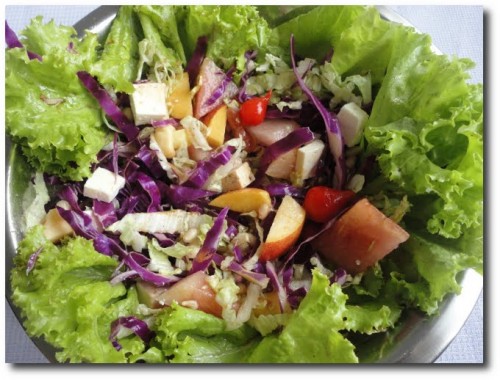It is very important to properly store all kinds of foods. If held at improper temperatures, some foods begin to taste, smell, and look unpleasant, and more importantly, they can make people sick. Knowing which foods need special handling and exactly how to store them safely is essential.
POTENTIALLY HAZARDOUS FOODS
The Food and Drug Administration (FDA) defines many types of Potentially Hazardous Foods (PHFs.) These foods can become dangerous to consume if they are not stored and handled correctly. Foods considered to be PHFs include:
– Beef, pork, poultry, and other meat
– Fish and shellfish
– Milk and other dairy products
– Dishes containing cooked beans, rice, pasta or potatoes
– Unpasteurized eggs
– Raw sprouts and leafy greens
– Cut tomatoes and melons
– Tofu and soy
– Garlic and oil mixtures that have not been heat-treated
These foods all contain moisture and protein, and all are slightly acidic; three things that bacteria need to grow. PHFs should be kept within proper temperature ranges at all times to prevent the growth of bacteria and other pathogens. The FDA provides information regarding safe food storage and handling. For more information please see Food Safety Information at the Food and Drug Administration Website.
SAFE STORAGE
PHFs should never sit at room temperature for more than two hours. Even cooked dishes that contain PHFs should be eaten within two hours of cooking or cooled properly in a refrigerator or freezer. Refrigeration and freezing do not kill any pathogens that might be in or on food but will slow the growth and help to keep the food safe to eat. PHFs, including raw meat, poultry or fish that will be cooked and eaten within a few days, should be stored in a refrigerator set to below 40 F (4 C.) If raw meat items will not be consumed within a few days, they should be placed in a freezer set to 0 F (-18 C.). Ready to eat PHFs should be refrigerated and consumed within a few days. Sometimes a “Use by” date can be found on pre-packaged food items to indicate how long the food should be safe to consume. When storing food in a refrigerator or freezer, it is important to keep raw foods from contaminating ready-to-eat foods. Raw foods should be stored in a separate refrigerator or freezer whenever possible, or stored below ready-to-eat foods if both are being stored in the same refrigerator or freezer. Most foods that are not PHFs may be safely stored at room temperature in a clean, dry place or according to the packaging directions.
THAWING, COOLING, AND REHEATING
It is important to follow safe thawing, cooling, and reheating practices when storing PHFs or using previously-stored PHFs and cooked dishes containing PHFs. It is generally a good idea to thaw all food, not only PHFs, in the refrigerator, the microwave, or in water that is 70 F (21 C) or cooler. After cooking, PHFs should be cooled as quickly as possible to prevent the growth of bacteria. Place a large cooked dish in an ice bath or break it up into smaller containers and place in the refrigerator or freezer immediately. When reheating stored pre-cooked foods, raise the temperature as quickly as possible to 165 F (74 C.)
COOKED FOODS
Most cooked foods that are being hot-held in serving dishes should be kept above 135 F (57 C.) Any hot food that drops below that temperature for more than four hours should be discarded.

 Share on bsky
Share on bsky





Read 0 comments and reply